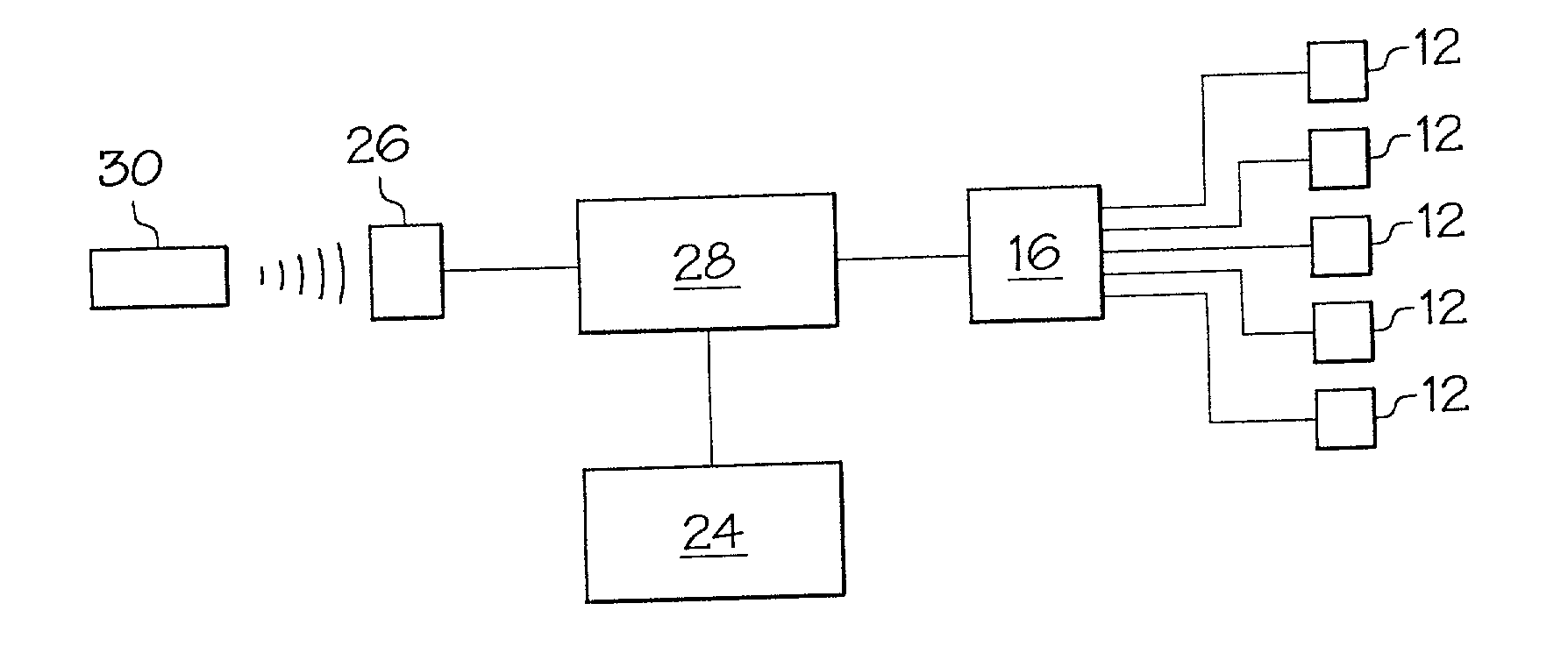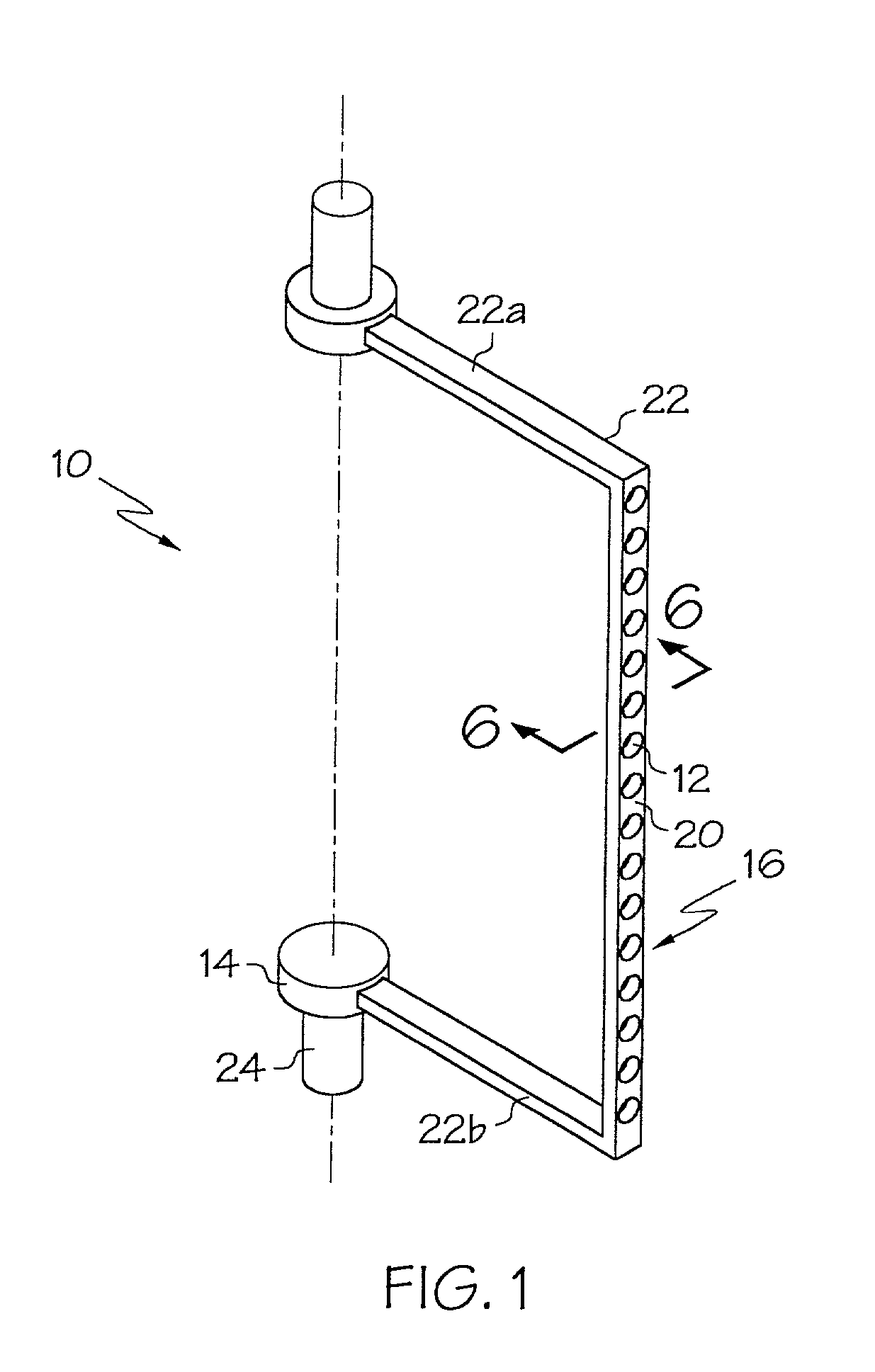LED sign
a technology of led signs and led lights, applied in the field of led signs, can solve the problems of large heat emission, limited display or display signs, complex and effective illumination signs, etc., and achieve the effects of simple and inexpensive design, operation, and long life cycl
- Summary
- Abstract
- Description
- Claims
- Application Information
AI Technical Summary
Benefits of technology
Problems solved by technology
Method used
Image
Examples
Embodiment Construction
is hereafter described with specific reference being made to the drawings in which:
[0066] FIG. 1 is a perspective view of an embodiment of the invention wherein a single display is equipped with a single arm and single column of light sources.
[0067] FIG. 2 is a perspective view of an embodiment of the invention wherein a single display is equipped with a plurality of arms and columns of light sources.
[0068] FIG. 3 is a perspective view of an embodiment of the inventive display system which includes a plurality of multi-armed displays arranged in a circular pattern.
[0069] FIG. 4 is a perspective view of another embodiment of the inventive display system which includes a plurality of multi-armed displays arranged in a linear arrangement.
[0070] FIG. 5 is a perspective view of another embodiment of the inventive display system which includes a plurality of multi-armed displays arranged in both a linear and circular pattern.
[0071] FIG. 6 is a close-up perspective view of an individual li...
PUM
 Login to View More
Login to View More Abstract
Description
Claims
Application Information
 Login to View More
Login to View More - R&D
- Intellectual Property
- Life Sciences
- Materials
- Tech Scout
- Unparalleled Data Quality
- Higher Quality Content
- 60% Fewer Hallucinations
Browse by: Latest US Patents, China's latest patents, Technical Efficacy Thesaurus, Application Domain, Technology Topic, Popular Technical Reports.
© 2025 PatSnap. All rights reserved.Legal|Privacy policy|Modern Slavery Act Transparency Statement|Sitemap|About US| Contact US: help@patsnap.com



